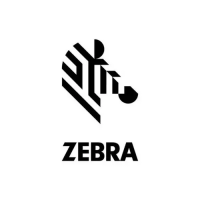Settings
127
• Log path - Specifies the high level log path for storage of all kernal logs. This setting applies globally to all
kernal buffers.
• Kernal Log filename - Specifies the base log filename for this kernal buffer. The current file count is
appended to this name.
• Max Kernal log file size - Specifies the maximum size, in megabytes, of an individual log file.
• Kernal Log interval - Sets the interval, in seconds, on which to flush the log buffer to the file.
• Kernal Log file count - Specifies the number of log files to keep and rotate through. Each log file is
subject to the max log size option.
• Enable System Timestamp in Kernel Log - Enables system timestamping for this log file.
• System Timestamp Interval - Sets the interval, in seconds, for when to timestamp the log.
Logcat Module
Logcat is an essential debugging tool on Android devices. RxLogger provides the ability to record data from all four
of the available logcat buffers. The Logcat plug-in has the ability to collect data from multiple logcat buffers
provided by the system. Currently these are the main, event, radio, and system buffers. Each of the settings are
available for each buffer independently unless otherwise noted.
• Enable Module - Enables logging for this module.
• Log path - Specifies the high level log path for storage of all logcat logs. This setting applies globally to all
logcat buffers.
• Enable main logcat - Enables logging for this logcat buffer.
• Main Log interval - Sets the interval, in seconds, on which to flush the log buffer to the file.
• Main Log filename - Specifies the base log filename for this logcat buffer. The current file count is
appended to this name.
• Main Log file count - Specifies the number of log files to keep and rotate through. Each log file is
subject to the max log size option.
• Main Max log file size - Specifies the maximum size, in megabytes, of an individual log file.
• Main Log Filter - Custom logcat filter to run on the main buffer.
• Enable event logcat - Enables event logging for this logcat buffer.
• Event log interval - Sets the interval, in milliseconds, on which to flush the log buffer to the file.
• Event log filename - Specifies the base log filename for this logcat buffer. The current file count is
appended to this name.
• Event log file count - Specifies the number of log files to keep and rotate through. Each log file is
subject to the max log size option.
• Event log file size - Specifies the maximum size, in kilobytes, of an individual log file.
• Event log filter - Custom logcat filter to run on the event buffer.
• Enable radio logcat - Enables logging for this logcat buffer.
• Radio log interval - Sets the interval, in milliseconds, on which to flush the log buffer to the file.
• Radio log filename - Specifies the base log filename for this logcat buffer. The current file count is
appended to this name.
• Radio log file count - Specifies the number of log files to keep and rotate through. Each log file is
subject to the max log size option.
• Radio log File size - Specifies the maximum size, in kilobytes, of an individual log file.
• Radio log Filter -Custom logcat filter to run on the radio buffer.

